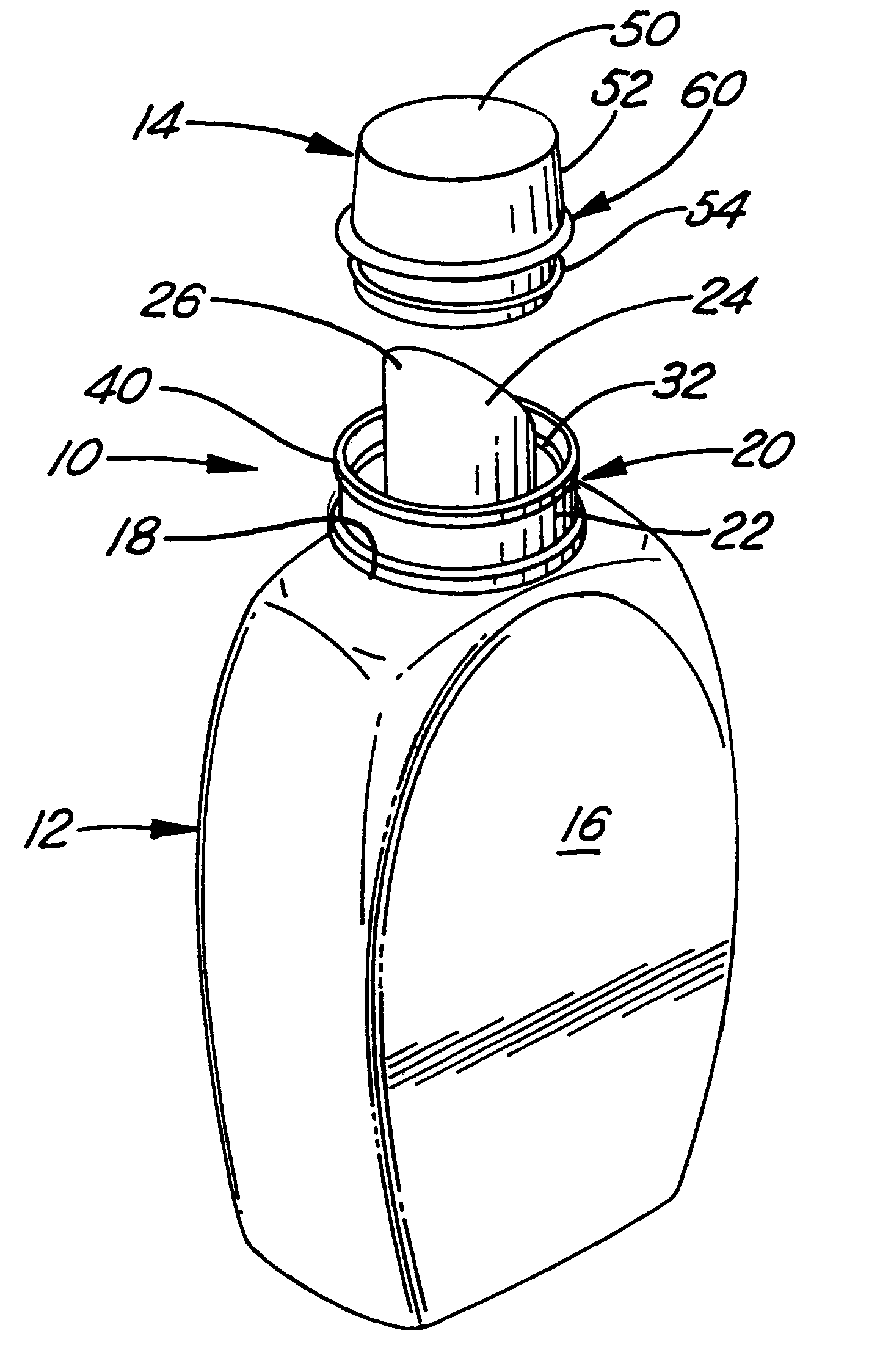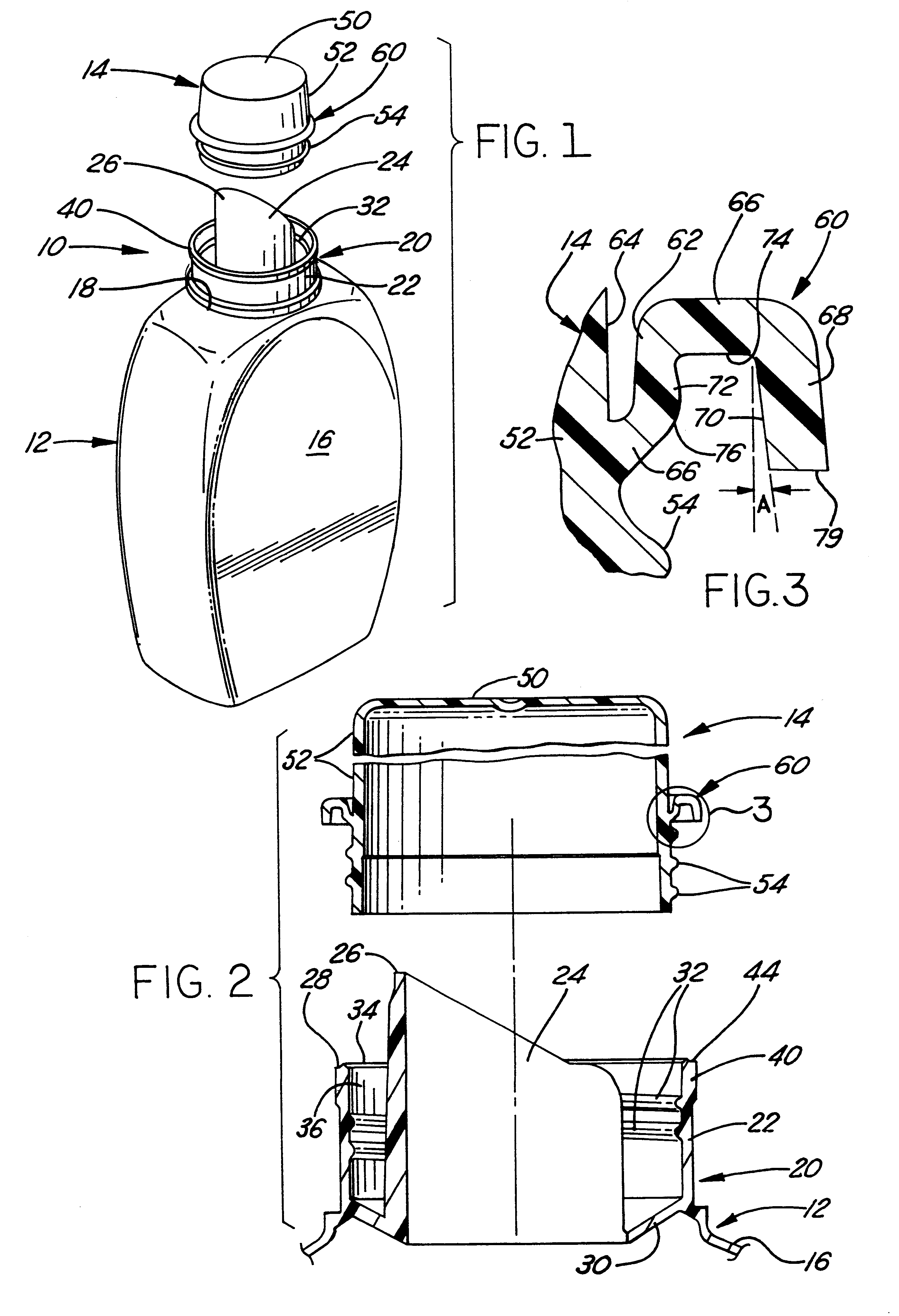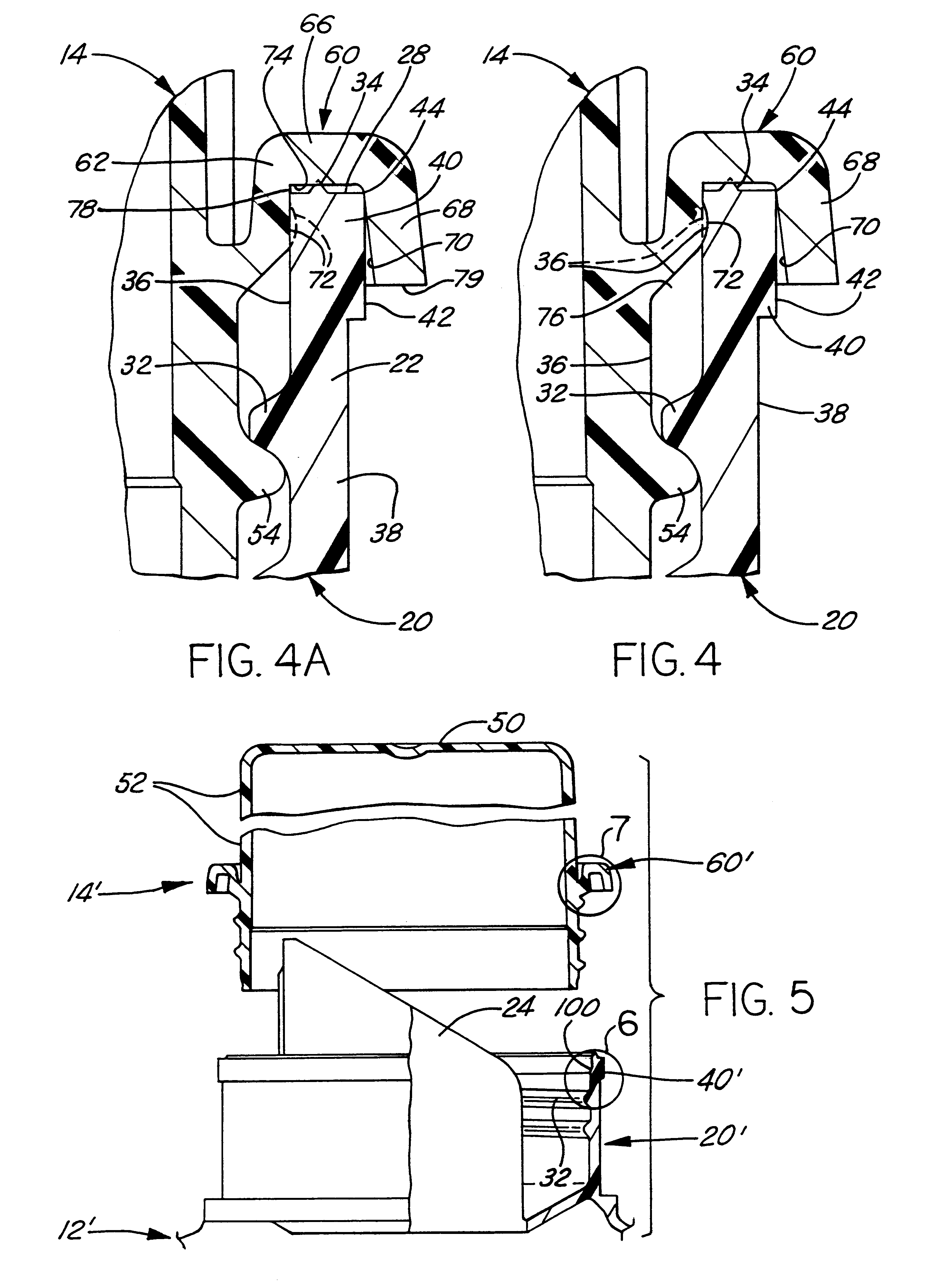Closure for container and closure package and method of making same
a technology of closure package and container, which is applied in the direction of closure using stoppers, liquid handling, applications, etc., can solve the problems of reducing the effectiveness of the seal, poor strip torque capability and leakage, and the potential of the container to leak past such sealing systems
- Summary
- Abstract
- Description
- Claims
- Application Information
AI Technical Summary
Benefits of technology
Problems solved by technology
Method used
Image
Examples
first embodiment
In accordance with the invention shown in FIGS. 1-4, a closure-and-container package 10 is shown in FIG. 1 that, by way of example, is of the self-draining DBS type that comprises a plastic bottle 12 specifically designed for liquids and which may be constructed in accordance with the disclosure of the aforementioned Krall U.S. Pat. No. 5,207,356. The package also includes a removable combination cap and dispensing cup type closure 14 designed for removable threaded attachment to container 12.
Container 12 includes a hollow body portion 16 which terminates at its upper end in an opening 18 through which the contents of the container 12 can be dispensed. A dispensing portion 20 extends from and communicates with body portion 16 and includes a circular cylindrical wall or collar 22 which extends angularly around body opening 18. A dispensing spout 24 is located within and is encircled by collar 22 and includes an upper end pouring lip 26 which extends above the uppermost free end edge ...
second embodiment
DETAILED DESCRIPTION OF THE SECOND EMBODIMENT
FIGS. 5-8 illustrate a second embodiment of the closure-and-container sealing system of the invention wherein like elements are given like reference numerals and their description not repeated, and those elements alike in fimction are given the same reference numerals raised by a prime suffix. In this embodiment, the finish of the container is provided with an annular circumferentially continuous internal groove 100, best seen in FIG. 6, at a predetermined design location in interior surface 36 axially between the uppermost tum of thread 32 and the upper end surface 28 of head 40. Closure 14' is identical to closure 40 except that the trapping flange 60' is provided with the circular sealing plug rib 72' having a suitably modified contour, and being made of a deformable material with sufficient resilience to be resiliently yieldably deformed during downward travel of flange 60' relative to head 40' to enable it to be squeezed radially inw...
PUM
 Login to View More
Login to View More Abstract
Description
Claims
Application Information
 Login to View More
Login to View More - R&D
- Intellectual Property
- Life Sciences
- Materials
- Tech Scout
- Unparalleled Data Quality
- Higher Quality Content
- 60% Fewer Hallucinations
Browse by: Latest US Patents, China's latest patents, Technical Efficacy Thesaurus, Application Domain, Technology Topic, Popular Technical Reports.
© 2025 PatSnap. All rights reserved.Legal|Privacy policy|Modern Slavery Act Transparency Statement|Sitemap|About US| Contact US: help@patsnap.com



